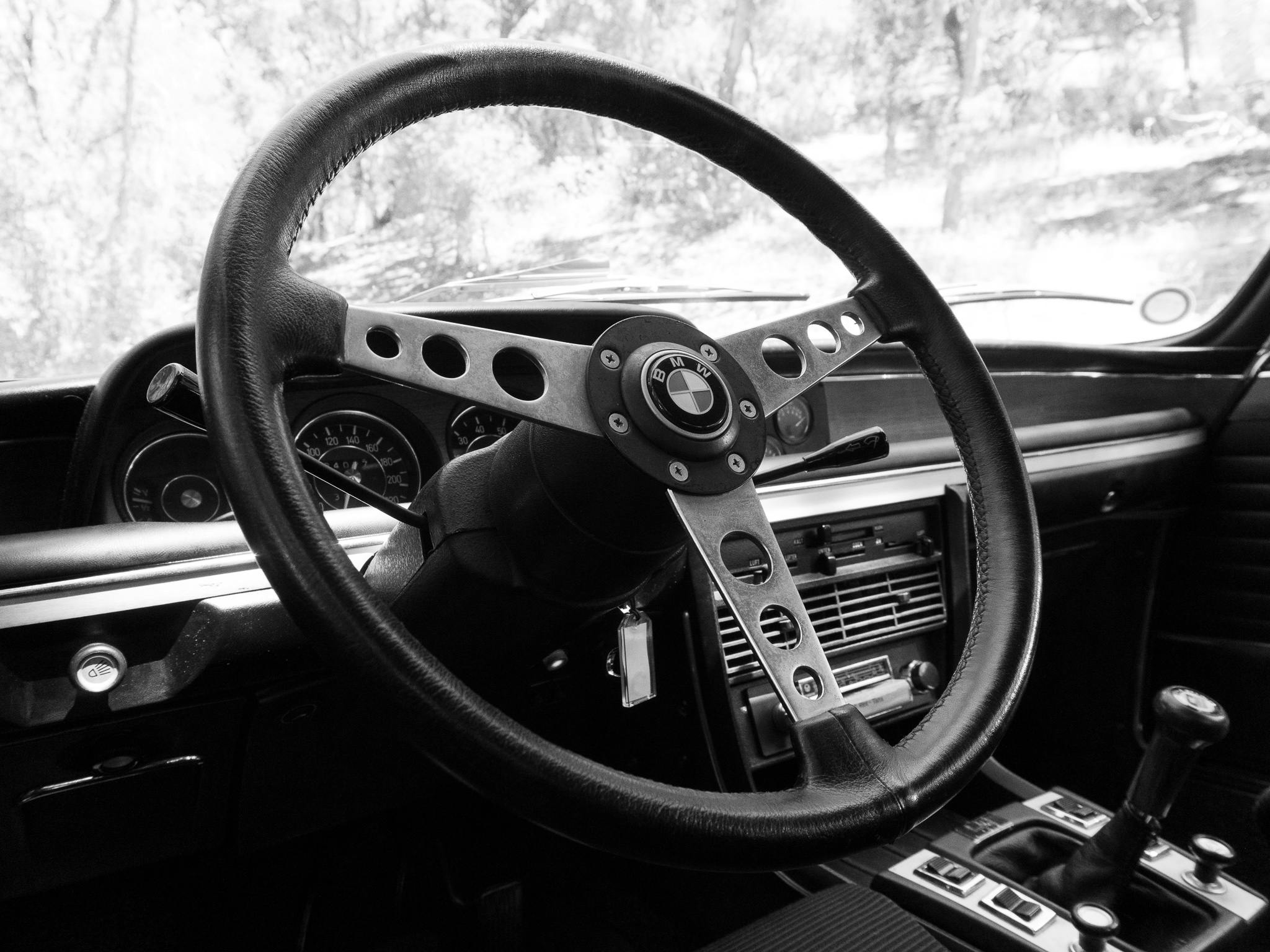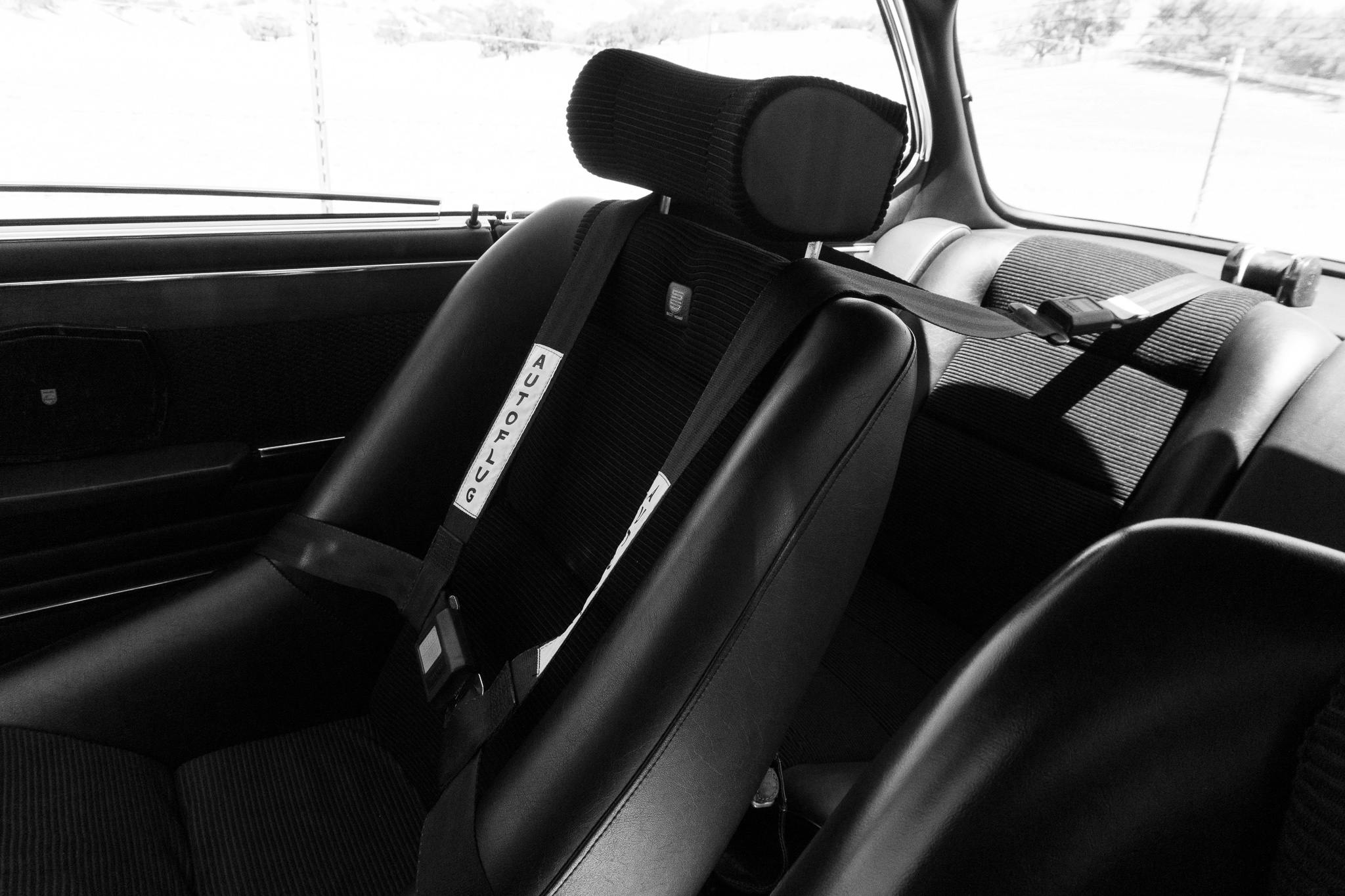Media | Articles
Four hours with BMW’s $250,000 landmark
The silver BMW cleared the suffocating marine layer over Monterey. Vanity began to loosen, and you forgot to glance at traffic to see if other drivers were noticing the car—its subtle, specific sense of special. Your hands were too busy listening to the wheel. At certain moments the slight judders in the rim would disappear, as the car ducked into and swooped out of unobstructed bends in the mountains, the landscape all buff and olive drab underneath a baby blue sky.
To meet this car for the first time, knowing its history, is to expect a kind of experience. To feel that you owe it a certain sort of response. The 1973 3.0 CSL isn’t the fastest BMW in history. Expensive and limited-production, it didn’t become a tastemaker for the U.S. market, as the 2002 had just years before. It has no such egalitarian persona; it belongs to the story of BMW’s Motorsport division, and to that division’s first triumph. A creature of the rulebook, this is one of a thousand-odd cars that fulfilled a production quota and allowed Motorsport—founded only the year before, in 1972—to go racing with a lightened version of the six-cylinder E9 coupe. That car won the European Touring Car Championship only a year later, in 1973.
The race cars cut now-famous silhouettes, with their square and jutting jaws, box fenders, and high-flying rear wings. Their streetgoing counterparts are comparatively undercover. No aero kit, no colorful stripes in M’s signature red, blue, and purple.
Surely it is sacrilege for such a car, such a specifically engineered solution, to represent an idea as commonplace, as unremarkable and general, as escape.
Squatting on the curb, munching an In-N-Out burger, you began taking it in. Fat tires wrapped around tiny, 14-inch wheels. Slim, forward-canted kidney grilles. Delicate pillars connecting roof to body, lined in slim chrome trim. A black stripe from pointy nose to slightly less pointy tail, with “3.0” and “CSL” cut into the vinyl: three liters for the displacement of the straight-six underhood. CSL stands for German words, what in English means Coupe Sport Lightweight.
Marketplace
Buy and sell classics with confidence
Lunch done, wrapper tossed. Open the shallow steel door. You plunk into deep, short, thick-walled buckets that adjust only front and back, with headrests that tuck into the nape of your neck. A racing harness bolted to the cabin’s back wall clamps you tight. Fire the engine, note the high and stiff clutch, pull the wooden shift knob toward your thigh until the reverse gate yields—and discover the lack of power steering. Hand over hand, inch by inch, a little nervous, chewing on the 21st-century assumption that a car’s petite footprint should automatically correspond to low-speed maneuverability.
Leaving the city, acclimating to the clutch, shoulders pinned in place, any sense of historical reverence is cramped by mild inconvenience. Nothing is as you expect. The tach isn’t in the middle. The speedometer is in kilometers. Nevermind learning the language of handling or road behavior: The climate controls are in German. (You don’t speak German.)
Traffic dissolves slowly as you head east, away from the sea and toward the hills. Frustration lies in wait on the first, delightfully bendy, stretch: a backhoe crouched on a trailer behind a pickup, crawling along like some industrial insect. Only a few hours to spend with this car, and this? Finally, the road opens. Humming along at speed, along gentle curves and smooth pavement, the CSL is content. Fluid and unbothered—escape at last.
The car and the land take over. You forget the clamp of the belts on waist and shoulders. The lack of cell reception, or music, or cupholders. If there is air-conditioning to offset the warming air and direct sunlight, it doesn’t seem worth the trouble. No clock on the dashboard. The road opens, curve after unobstructed curve, the car meeting you after the distractions of the city with a constant, visceral chatter from steering wheel and engine and tires. You listen with fingertips to the car’s gentle language of pitch and roll and stress—and so freedom comes by way of confinement. Channeled through machine, relayed to you despite yourself.
Vistas yawn beneath, in cautious peeks through the open windows. The hills appear against the sky, curving and bony, like the spine of some giant creature. The silver car seems as improbable, as insignificant in time, as a winking bead of mercury.
Check out the Hagerty Media homepage so you don’t miss a single story, or better yet, bookmark it.




























